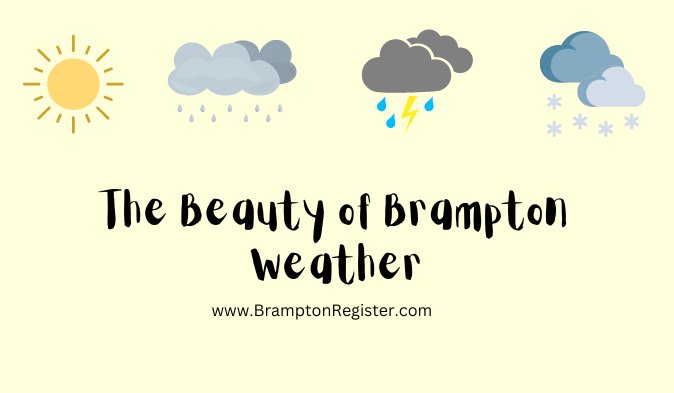
A business is a group that does professional, commercial, or industrial work. Business in Brampton can be either for-profit or non-profit groups.
Making money is what every business is trying to do. Trade, buying, selling, or making goods and services are all things that businesses can do to meet customers’ wants and make money.
Brampton is a city in Ontario, Canada, and a business hub. It is in the Greater Toronto Area. Brampton’s business services sector consists of finance, insurance, real estate business, professional services, accommodation convention and food services, and public administration, to name a few.
Brampton developed from a rural area to a bustling city. Its Peel Art Gallery, Museum, and Archives are kept in buildings from the 19th century and more recent times. Many started as small companies and developed into big businesses. Brampton is the home of many successful businesses.
What Businesses Do for People and the Economy
Business is an important part of our lives. They start by making things and services that meet our needs and wants. Then, they hire households to work for them and pay them with wages, salaries, and perks. This means that they can make money from it and keep their lives going.
Where does the business fit in and handle things? There is business everywhere. They can work in the primary sector, which includes mining, to get natural materials. Or they gather different kinds of crops.
Most of the time, they make raw materials that other businesses in the secondary sector use.
Some people work in the secondary field. They take raw materials and turn them into intermediate or finished goods. Businesses sell intermediate goods so that they can be turned into finished goods, which are then sold to customers.
In the meantime, the final goods are ready to be used immediately and don’t need to be processed further to get their benefits.
The third group of businesses are in the tertiary sector. They provide a service. They do a lot of different things, from retail and wholesale selling to tourism services to financial services like banking and insurance.
Not only do they help businesses in the primary and secondary areas, but they also help individuals.
Role of Business
Businesses purchase inputs from vendors, like raw materials. After that, they turn it into output, which they can sell for more than what they paid for it.
They change lower-priced inputs into higher-priced products through a process called value-adding.
The products we get are used to fulfill our wants and needs. So what are needs and wants?
- Needs: Our needs are things we have to have in order to stay alive. There are big risks, like death, if you don’t meet them. One example is the need for food, water, clothes, and a place to live.
- Wants: Wants are things we need but aren’t as important to our lives. One example is that we want a holiday and a smartphone, but we’d be fine without either one. In the same way, we need basic clothes, but if we have enough money, we might want fancy clothes.
Business outputs:
There are two main types of business output: goods and services. We name them both as products.
- Goods are things that are tangible, or that can be touched. They are clear to see and touch. We can also keep them and use them later. Clothes, food, smartphones, and cars are some examples.
- Intangible goods are services. The good things about them are something we can only feel, not see or touch. Some examples are banks, hotels, experts, and barbershops. We can talk to the people who gave them to us, but we can’t see what they gave us like we can when we buy something.
How are inputs used?
In a broad sense, inputs are not just raw things. These four things, which we call “factors of production,” are needed for a business to run:
- Land: A factory or business building might need land, and natural resources could be used to make raw materials.
- Labour: Labour is the work that a person does, both physically and mentally.
- Capital: Capital includes things that people make to help with output, like tools and machines.
- Entrepreneurship: Entrepreneurship is when we try to start a business by organizing land, labour, and cash and taking risks to do so.
What does business do for people and the economy?
As said, business is very important to our society and economy. Businesses make things that meet our needs and wants, but they do more than that.
They do, however, make money and work for people. They also compete with each other, leading to new ideas and better use of resources, ultimately resulting in cheaper and better goods and services.
Satisfying our wants and needs
For-profit businesses sell things and services to meet our needs and want. Without them, we would have to make everything ourselves, like our clothes and food.
After that, companies need to go up against each other. To keep the money coming in, they need to give customers more happiness than their rivals. They have to be more efficient and come up with new ideas to stay competitive, which means prices go down and quality goes up.
Adding value
Businesses make the economy rich by adding value to the things they use. This makes the result more important than the thing that went into it. Lastly, adding value to their products makes them more appealing, and most of the time, people are happy to pay more for them.
There are several ways to add value or create worth. As an example, businesses change inputs into more valuable forms. For example, bauxite is changed into aluminum slabs, which are then used to make car bodies.
Another example is making things easy for customers like fast food restaurants do, by saving them time. Adding value is also helped by quality, such as when smartphones use 4G technology instead of 3G.z
Creating Jobs
The economy has jobs because of business. Because of this, more workers are needed when there are more businesses. In the same way, they need more workers as they get bigger.
When people open a business, they hire people to help run it. They do a lot of different jobs, like accounting and finance, marketing, business, and human resources.
After that, as companies grow, they need more workers. The bigger the business, the more complicated things it has to do and the more people it needs to do them.
Creating income
Entrepreneurs start businesses to make money. If the business does well, they will make more money and be richer.
In the same way, people make money by working. They can use the money to buy things they need and want.
In other words, more business action means more money in the economy. There are more people who work to make money. More people want to buy things and services when their incomes go up.
Then, when there is a lot of demand, business owners see more chances to grow their companies and start new ones.
Growth in the economy
It helps the economy grow because of this business. Additionally, business activity sets off a chain reaction that encourages more businesses to open, bringing more money and jobs to the area.
Having more businesses in the area does more than just create jobs. That being said, it will also lead to changes in the region’s roads and trains. Healthcare facilities, schools, shopping malls, and other state and private services are also growing. The business in the area eventually got better.
Raising the living standard
Business actions raise people’s living standards. It can go through more than one way.
- First, we can meet our needs and wants with the help of the business’s goods and services. That’s not all—the jobs also bring in money. The money lets us buy different things and get different services that meet our needs and wants.
- We can also put it in investments to help us in the future, like when we leave. After that, we can use it to buy insurance to lessen the damage we might do.
- Third, when there is competition, prices decrease, and things and services improve. To keep customers happy, businesses have to do a better job than their competitors. This forces them to be more efficient and come up with new ideas. In the end, it makes our lives better and more comfortable because we can get better goods at lower prices.
For instance, we don’t have to buy a camera to record and photograph our best times with our cell phones. We weren’t able to do it before. This is because phone makers don’t put high-resolution photos in them.
Empowering the community
Some businesses try to find a middle ground between making money, helping people, and protecting the earth. They don’t try to make the company as much money and profit as possible.
But they put the money they make back into social and environmental issues.
One way microfinance providers get money is through crowdfunding. They then give the money to small businesses with flexible terms and low-interest rates.
It helps small businesses grow, which brings more work and money to the area. After that, microfinance companies use the money they make to help more people in other areas.
Sometimes, social businesses give people in a community more power by teaching them how to be entrepreneurs. After that, they help the community sell the product and build public facilities like schools and hospitals with the money from the sales.
Why is it important to measure businesses?
Keeping an eye on the number of businesses in Brampton gives us a good idea of our city’s economic health and vitality.
We use this metric and other related data, like the types of businesses in Brampton, to help us plan programs to keep companies here, help them grow, and bring new ones here. It also helps policymakers make decisions that will help our businesses in Brampton grow and do well.
How do you measure this?
We get the data for Canadian Business Counts from Statistics Canada’s Business Register, which is a central database of information about companies and organizations in Canada that is updated every six months.
If the Business Register changes how it counts companies or how it classifies businesses by industry, the counts may go up or down, which can affect the number of reported active businesses.
How much progress have we made?
There were 10,665 more businesses in Brampton in 2022 than there were in 2021. This is up 13.1%. There are both businesses with employees and businesses without employees in this number. From 26,934 in 2021 to 28,781 in 2022, the number of businesses with employees rose by 6.9%.
There were fewer than ten workers in 89% of all businesses that were tracked in 2022. We have changed our economic development plan to focus on the high-growth business sectors of Advanced Manufacturing (including Food & Beverage), Health & Life Sciences, and Innovation & Technology in order to keep up with this growth.
As a supporting sector, Brampton’s logistics sector is also very important to us. That’s why we’re working harder to connect different types of transportation, like air, rail, and road.
Brampton is in a great spot because it is in the middle of Canada’s Innovation Corridor. New strategic investments will have a big and good effect on the regional job market and on Brampton’s long-term job growth.
The City of Brampton has also finished its first-ever Economic Development Master Plan. This plan shows what actions, challenges, and opportunities will happen over the next 20 years.
This plan has both short-term and long-term steps to help the economy grow and encourage future cooperation between Brampton, the business community, and post-secondary schools.
The city council approved Brampton’s Economic Recovery Strategy to help the local economy recover after COVID-19.
The Strategy tries to make Brampton’s economy stronger and more competitive by promoting short-term and long-term actions that are in line with its four pillars: Arts, Culture, Tourism; Innovation, Technology, and Entrepreneurship; Investment; and Technology, Investment, and Entrepreneurship.
Frequently Asked Questions (FAQs) about Business in Brampton
What is the business landscape like in Brampton?
Brampton boasts a diverse business environment, with key sectors including finance, insurance, real estate, professional services, accommodation, convention and food services, and public administration.
How has Brampton’s business community evolved over the years?
Initially a rural area, Brampton has transformed into a bustling city with numerous successful businesses. Many started as small enterprises and grew into significant contributors to the local and national economy.
What role do businesses play in the economy?
Businesses are essential for meeting societal needs and wants, providing goods and services, creating jobs, and contributing to economic growth. They operate across various sectors, from primary (extracting raw materials) to secondary (manufacturing) and tertiary (providing services).
How do businesses add value to their products and services?
Businesses enhance the value of their offerings through processes like transforming raw materials into finished goods and providing quality services. This value addition makes products more appealing and contributes to economic growth.
What impact do businesses have on job creation and income generation?
Businesses are major contributors to job creation. As they grow, they require more workers, stimulating economic activity and increasing income levels. Entrepreneurial endeavours also contribute to personal income, improving living standards.
How does business growth benefit Brampton’s overall economy?
Business growth leads to a chain reaction, fostering more economic activity, creating jobs, and stimulating infrastructure development. This growth positively influences various aspects, from transportation to healthcare facilities, ultimately enhancing the overall quality of life in the area.
How does the City of Brampton support and plan for business development?
The city employs strategic plans, such as the Economic Development Master Plan, to guide short-term and long-term actions that foster economic growth. Initiatives include focusing on high-growth sectors, improving logistics, and connecting with post-secondary institutions for future cooperation.
What steps has Brampton taken to recover from the impact of COVID-19 on its economy?
Brampton has implemented an Economic Recovery Strategy, aligning with four pillars: Arts, Culture, Tourism; Innovation, Technology, and Entrepreneurship; Investment; and Technology, Investment, and Entrepreneurship. This strategy aims to make the local economy stronger and more competitive.
How is the growth of businesses in Brampton measured?
Business growth is monitored using data from Statistics Canada’s Business Register, which is updated every six months. The number of businesses, types of businesses, and changes in industry classifications are crucial metrics for assessing Brampton’s economic health.
What are the key sectors identified in Brampton’s economic development plan?
Brampton’s economic development plan focuses on high-growth sectors, including Advanced Manufacturing (including Food & Beverage), Health & Life Sciences, and Innovation & Technology, along with a significant emphasis on the logistics sector.
RELATED POSTS
View all



